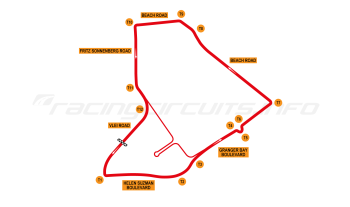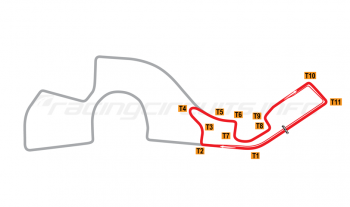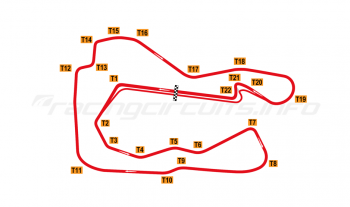Tokyo Street Circuit
Circuit Overview
Japan gains its first ever true street circuit in 2024, when the Formula E series visits Tokyo for the first time.
The Tokyo Street Circuit (Japanese: 東京ストリートサーキット) winds around the city’s International Exhibition Center on the waterfront of Tokyo Bay, with the cityscape as its backdrop.
The 18-turn course consists of a combination of three straights, connected by tight corners and chicanes in the traditional Formula E style, though it also features one high speed corner and a section of sweepers to add extra challenge.
Circuit History
Formula E has has ambitions to race in Japan since the series’ inception, with the country being one of the leading car manufacturers and its automakers heavily investing in EV technology. Since 2013, co-founder Alberto Longo attended numerous meetings with the Tokyo Metropolitan Government, in an attempt to get a deal over the line. Various city administrations have come and gone in that time, with differing levels of enthusiasm for the project, leading to stasis for almost a decade before the race became a reality.
In that time, explorations were also made tentatively with other cities, including Yokohama, home to the headquarters of Formula E manufacturer Nissan and other global players such as Isuzu and JVCKenwood. These similarly did not bear fruit.
The Tokyo administration began to become more enthusiastic as the years went by, particularly following the election of current Governor Yuriko Koike, a former environment minister. With the need to find sustainable public transportation projects a key part of the city’s agenda, the attraction of Formula E as a high-profile event to help spearhead the conversation around a switch to EV transportation grew ever more prominent.
Nevertheless, some large obstacles had to be overcome, not least the traditional conservatism the city had shown to major public events. It took the organisers of the Tokyo Marathon nine years to gain city approval for an event that was potentially less-disruptive to the city than a Formula E event. Add in the fact that the city was due to host the Olympics in 2020, later postponed to 2021 by the Covid pandemic, and it’s not hard to see why it took so long for the E-Prix to gain approval.
The breakthrough seems to have been a meeting between Governor Koike and her Indonesian counterpart, Anies Baswedan, who as Governor of Jakarta had been instrumental in bringing Formula E to her city. With the reassurance of the benefits that city had seen from the arrival of the electric racing series, the final obstacles to Tokyo’s E-Prix fell.
“The championships will give momentum to spread zero-emission vehicles and provide the best opportunity to showcase what makes Tokyo so attractive,” Koike said, when commenting on the race’s approval by the FIA World Council in June 2023.
As a result, the cars will line up to race for the first time in March 2024, as part of what is thought to be a three-year deal.
Circuit layout
The track is centred around the Tokyo International Exhibition Centre – the largest venue in Japan, also known as Tokyo Big Sight – only minutes from the downtown area of the city. The course utilises both public roads (a first for Japan) and the surrounding land of the exhibition centre. The start/finish straight and the pits and paddock are located on the waterfront within the car parks of the East Wing of the Big Sight, as is the tight and twisty complex of corners that make up Turns 1-8.
From there, the course joins the public roads, heading along Port Road Ariake (Route 20) through a fast right-hand corner at Turn 9 and onto the Turn 10/11 chicane. At Turn 12, a 90-degree left-hander, the course heads south through a series of sweeping bends running alongside the elevated light rail system (much like the London ExCeL E-Prix course) before turning back onto the internal roads of the exhibition centre.
In total, the course measures just over 1.6 miles and Formula E’s track design experts are confident the circuit will deliver a challenge for the 22 drivers in the series, while providing maximum excitement and entertainment for fans at the race and TV viewers tuning-in around the world.
“We are excited to unveil the track for the inaugural Tokyo E-Prix and are confident it will create a unique challenge for the 22 drivers in Formula E to showcase their elite driving skills and give fans in Tokyo an experience they will never forget," said Alberto Longo, Co-Founder and Chief Championship Officer, Formula E. "We are honoured to be the first motorsport world championship to race on the streets of Tokyo.”
The first Tokyo E-Prix takes place on 30 March and forms round 6 of the 2024 race calendar.
Plan a visit
Get your race tickets!
Brought to you with: 
We've teamed up with Motorsports Tickets to bring you the best deals for Formula One, MotoGP, Le Mans and more.










